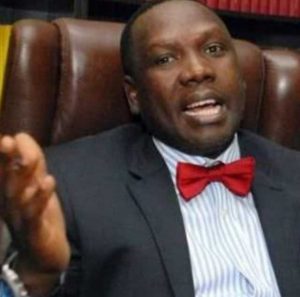How Trump campaign fooled supporters to raise money

By SHANE GOLDMACHER
Online donors were guided into weekly recurring contributions. Demands for refunds spiked. Complaints to banks and credit card companies soared. But the money helped keep Donald Trump’s struggling campaign afloat
Stacy Blatt was in hospice care last September listening to Rush Limbaugh’s dire warnings about how badly Donald J. Trump’s campaign needed money when he went online and chipped in everything he could: $500.
It was a big sum for a 63-year-old battling cancer and living in Kansas City on less than $1,000 per month. But that single contribution — federal records show it was his first ever — quickly multiplied. Another $500 was withdrawn the next day, then $500 the next week and every week through mid-October, without his knowledge — until Mr. Blatt’s bank account had been depleted and frozen. When his utility and rent payments bounced, he called his brother, Russell, for help.
What the Blatts soon discovered was $3,000 in withdrawals by the Trump campaign in less than 30 days. They called their bank and said they thought they were victims of fraud.
“It felt,” Russell said, “like it was a scam.”
But what the Blatts believed was duplicity was actually an intentional scheme to boost revenues by the Trump campaign and the for-profit company that processed its online donations, WinRed. Facing a cash crunch and getting badly outspent by the Democrats, the campaign had begun last September to set up recurring donations by default for online donors, for every week until the election.
Contributors had to wade through a fine-print disclaimer and manually uncheck a box to opt out.
As the election neared, the Trump team made that disclaimer increasingly opaque, an investigation by The New York Times showed. It introduced a second prechecked box, known internally as a “money bomb,” that doubled a person’s contribution. Eventually its solicitations featured lines of text in bold and capital letters that overwhelmed the opt-out language.
The tactic ensnared scores of unsuspecting Trump loyalists — retirees, military veterans, nurses and even experienced political operatives. Soon, banks and credit card companies were inundated with fraud complaints from the president’s own supporters about donations they had not intended to make, sometimes for thousands of dollars.
“Bandits!” said Victor Amelino, a 78-year-old Californian, who made a $990 online donation to Mr. Trump in early September via WinRed. It recurred seven more times — adding up to almost $8,000. “I’m retired. I can’t afford to pay all that damn money.”
The sheer magnitude of the money involved is staggering for politics. In the final two and a half months of 2020, the Trump campaign, the Republican National Committee and their shared accounts issued more than 530,000 refunds worth $64.3 million to online donors. All campaigns make refunds for various reasons, including to people who give more than the legal limit. But the sum the Trump operation refunded dwarfed that of Joseph R. Biden Jr.’s campaign and his equivalent Democratic committees, which made 37,000 online refunds totaling $5.6 million in that time.
The recurring donations swelled Mr. Trump’s treasury in September and October, just as his finances were deteriorating. He was then able to use tens of millions of dollars he raised after the election, under the guise of fighting his unfounded fraud claims, to help cover the refunds he owed.
In effect, the money that Mr. Trump eventually had to refund amounted to an interest-free loan from unwitting supporters at the most important juncture of the 2020 race.
Marketers have long used ruses like prechecked boxes to steer American consumers into unwanted purchases, like magazine subscriptions. But consumer advocates said deploying the practice on voters in the heat of a presidential campaign — at such volume and with withdrawals every week — had much more serious ramifications.
“It’s unfair, it’s unethical and it’s inappropriate,” said Ira Rheingold, the executive director of the National Association of Consumer Advocates.
Harry Brignull, a user-experience designer in London who coined the term “dark patterns” for manipulative digital marketing practices, said the Trump team’s techniques were a classic of the “deceptive design” genre.
“It should be in textbooks of what you shouldn’t do,” he said.
Political strategists, digital operatives and campaign finance experts said they could not recall ever seeing refunds at such a scale. Mr. Trump, the R.N.C. and their shared accounts refunded far more money to online donors in the last election cycle than every federal Democratic candidate and committee in the country combined.
Over all, the Trump operation refunded 10.7 percent of the money it raised on WinRed in 2020; the Biden operation’s refund rate on ActBlue, the parallel Democratic online donation-processing platform, was 2.2 percent, federal records show. (New York Times)





